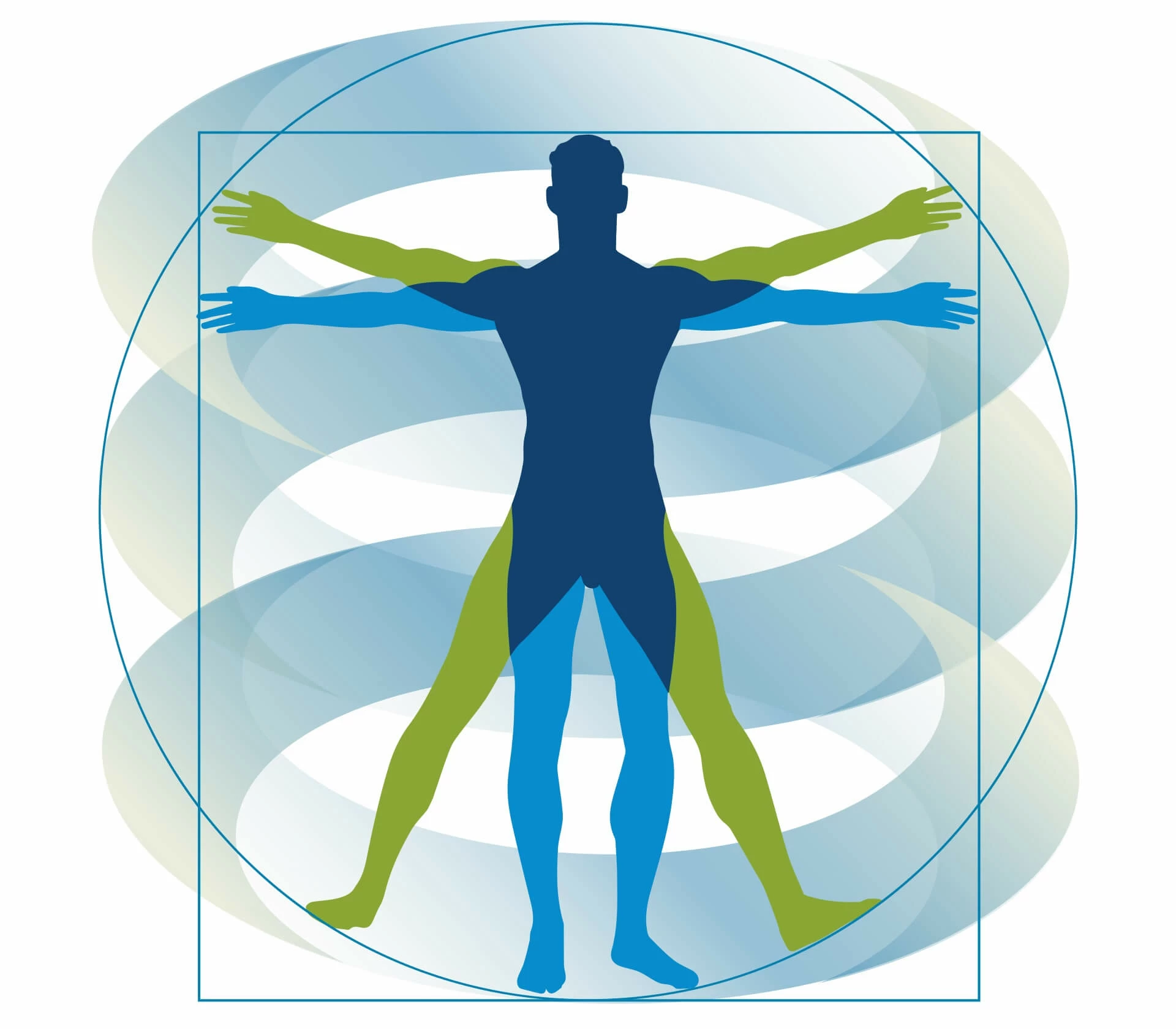
Psychoergonomics is a unique method that was developed by «IsraClinic» doctors. The essence of this method reflects the most modern approach to the treatment of diseases - talented medical care, that is, precisely selected individual treatment. Today, the practical application of psychoergonomics shows very good results in the treatment of patients with a wide variety of mental disorders and diseases. data.
In order to explain the essence of the psychoergonomics method, it is necessary to refer to the drawing “Vitruvian Man”. This image was created by Leonardo da Vinci as an illustration for a book with the works of the ancient Roman architect Vitruvius. It depicts a man with outstretched limbs, who is harmoniously inscribed in a circle. The image superimposed with closed legs fits perfectly into the square. The drawing conveys the proportions of a person, shows his harmony and integrity with the surrounding world.
This idea was fully reflected by the IsraClinic doctors in the creation of the psychoergonomics method. Each person is a unique personality, which consists of many facets and individual characteristics. Accordingly, for effective treatment it is necessary to consider all the characteristics of the patient, the history of his disease, concomitant pathologies, his interests, and characteristics of his psychotype. This approach corresponds to the most modern approach in medicine – talented medical care, that is, precisely selected individual treatment. In other words, psychoergonomics can be described in two words – individuality and complexity. Individuality implies a personalized approach, and complexity means participation in the process of diagnosis, treatment, and observation of various specialists who can assess the patient’s condition from several aspects. Psychoergonomics minimizes possible medical errors, helps to select an individual treatment regimen and achieve maximum results in therapy in a short time.
The difference between psychoergonomics and popular methods of treatment in psychiatry
Modern science has thousands of mental disorders and syndromes. Some of them can be successfully treated - phobias, depression, panic attacks, disorders of various forms; with some, long-term remission can be achieved: schizophrenia, schizoaffective disorders and others. Treatment specialists use standard approaches and medications that are usually used to treat a particular disease. Psychoergonomics is a new method that proves that individualization and a personal approach to the patient give better results than standard treatment regimens.
What is the standard treatment for psychiatric illnesses? The specialist looks at the patient for 15-20 minutes, makes a diagnosis and prescribes treatment, guided by standard protocols, and adjusts treatment regimens based on these protocols. For example, if a patient suffers from schizophrenia, then he will first be prescribed first-line drug treatment with typical or atypical antipsychotics, tranquilizers, and antidepressants.
The task of psychoergonomics is to study each case as deeply and in detail as possible. «IsraClinic» doctors assess the patient’s condition from three aspects – psychiatric, neurological and psychological. It is important to exclude an organic cause for psychopathology, to understand the reasons that contributed to the development of a particular disease. We are deeply convinced that there are no two identical schizophrenias or two identical depressions - each disease has its own cause, and treatment methods must be selected individually in each case. For example, in case of drug-induced schizophrenia, it is necessary to engage in addiction rehabilitation in addition to taking antipsychotics. And for depression caused by organic causes, in addition to relieving depressive symptoms, it is necessary to treat the organic disease.
Each person has protective and compensatory mechanisms, and under certain stimuli they come into play. But they work differently, hence the difference: if the news of a discovered serious illness puts one patient in a fighting state, and he will be ready to fight it, then the second will be plunged into deep depression.
Psychoergonomics: diagnosis and treatment
When developing a program of examination and treatment, the patient’s condition is of great importance (for example, patients with schizophrenia in a state of psychosis will not be able to complete the psychotherapist’s homework, will not be able to study and adequately answer the doctor’s questions). Therefore, the diagnostic and treatment program must consider many factors.
As a rule, as part of the diagnosis, a visual examination (MRI or CT scan of the head with a contrast agent), laboratory tests are performed - a general, biochemical blood test, analysis of hormonal status, vitamins and electrolytes. An anamnesis is collected - conversations are held with the patient, relatives, and the medical history is studied. Psychodynamic testing is carried out using projective tests, as well as an examination by a neurologist to exclude an organic cause for psychopathology.
Only based on an integrated approach can an accurate diagnosis be made, the cause of the disease identified, and how it should be treated. Accordingly, drug treatment and psychotherapy will be selected based on the personality characteristics and course of the patient’s illness.
Also, detailed diagnostics within the framework of the psychoergonomic method reveals whether the patient has concomitant diseases (diabetes, electrolyte imbalance, neurological pathology), based on this, treatment is prescribed and adjusted. This allows you to avoid many complications and prescribe the correct drug treatment regimen, as well as select exactly the method of psychotherapy that will be effective for this patient.
Psychoergonomics is the author's and officially recognized method of diagnosis, treatment and monitoring of the entire spectrum of psychiatric diseases. It was developed several years ago by doctors at the IsraClinic.